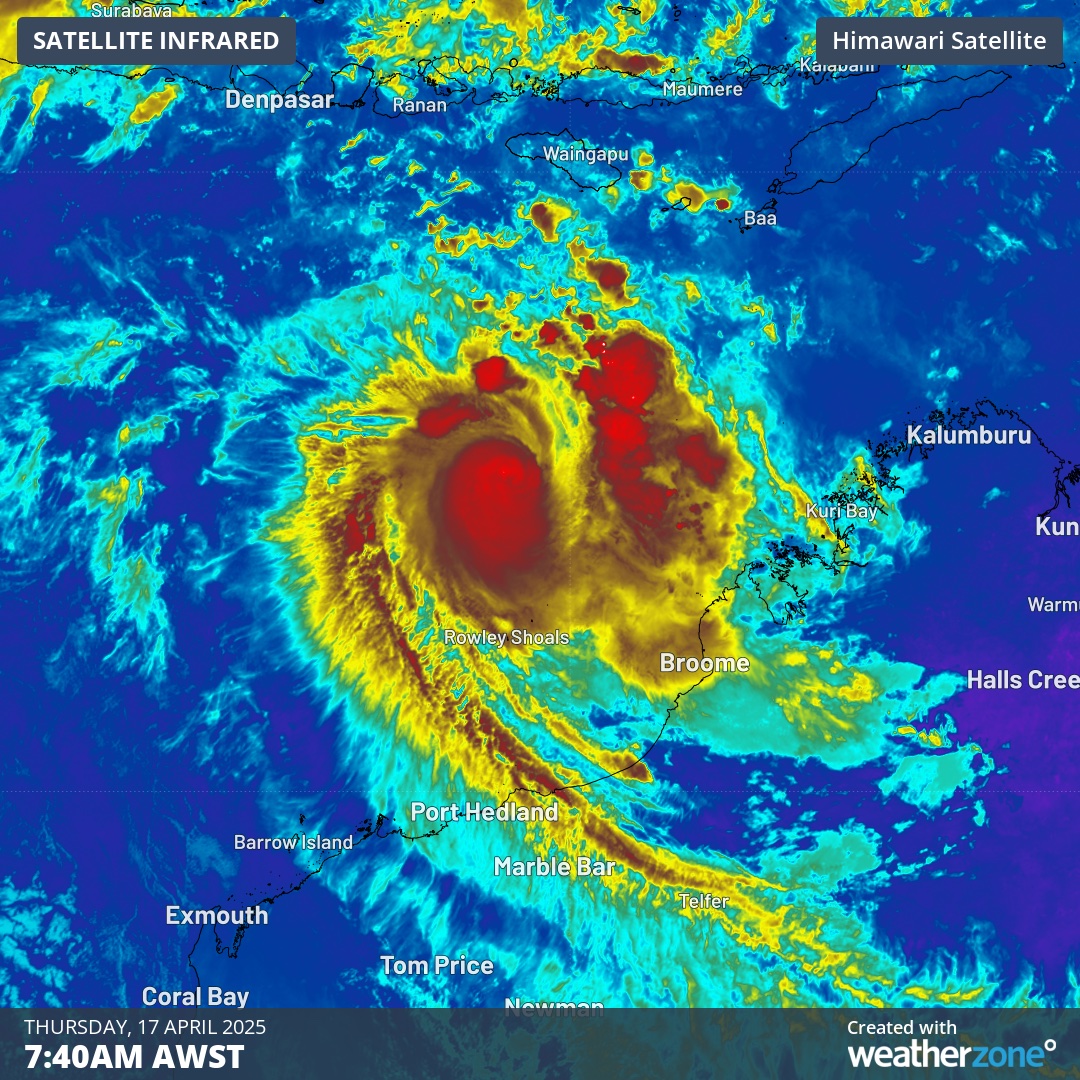News
‹ back to weather news
News
-
Severe Tropical Cyclone Errol to weaken before landfall
Ben Domensino, 17 April 2025Severe Tropical Cyclone Errol reached category 4 strength after rapidly intensifying on Wednesday, although the system will weaken before making landfall in WA this weekend.
Errol underwent a remarkable period of rapid intensification on Wednesday, jumping from a category 1 tropical cyclone on Tuesday night to a category 4 system by Wednesday night.
At 8am AWST on Thursday, Errol was a category 4 tropical cyclone located about 485 km northwest of Broome.

Image: Enhanced infrared satellite image showing Severe Tropical Cyclone Errol to the north of WA on Thursday morning.
After travelling towards the west over the last couple of days, Errol took a hard lefthand turn on Wednesday night into Thursday morning. This U-turn will put the system on a southeasterly track towards WA's Kimberley coast. This change in direction will also move the system into a less favourable environment, which will cause it to weaken as it approaches the coast.
The track map below, issued by the Bureau of Meteorology shortly before 9am AWST on Thursday, shows that Errol is expected to weaken quickly as it approaches the Kimberley coast on Thursday and Friday.

Image: Track map for Severe Tropical Cyclone Errol, issued at 8:46am AWST on Thursday, April 16, 2025. Source: Bureau of Meteorology.
At this stage, it is expected to make landfall as a category 1 tropical cyclone or tropical low (below tropical cyclone strength) on Friday night or Saturday morning.
Despite weakening, Errol will still cause heavy rain over parts of the Kimberley on Friday into the weekend. It could also cause damaging winds as it approaches and crosses the coast, most likely between Kuri Bay and Beagle Bay.
Errol is the 8th severe tropical cyclone in the Australian regions so far this season, which is the highest number of severe tropical cyclones in a single season for 19 years.
- Other news
- Sat 19 Apr 2025 Ex-Tropical Cyclone Tam brings huge waves to NSW coast on Good Friday
- Fri 18 Apr 2025 Sydney Royal Easter Show forecast
- Thu 17 Apr 2025 Your Easter capital city weather forecasts
- Wed 16 Apr 2025 Adelaide sweats through record April hot spell
- Wed 16 Apr 2025 Tropical Cyclone Errol strengthening near Australia – here's what to expect

